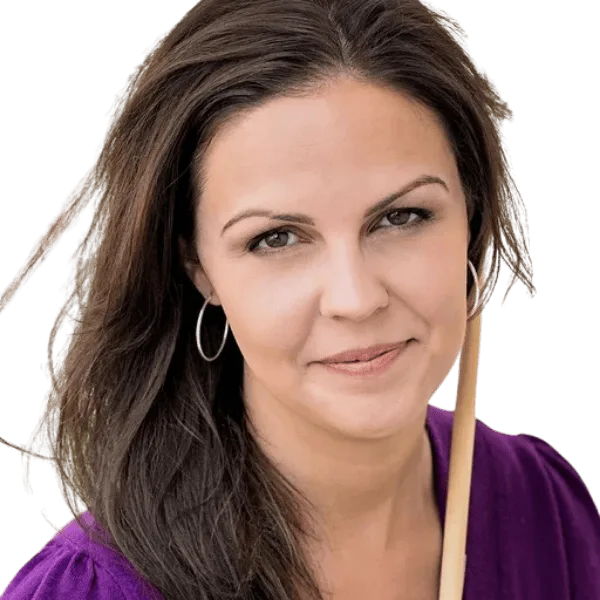-
Commitment to our readers
18 years
Helping you save money
Reviewed
by experts
Cited by
major publications
Finder maintains full editorial independence to ensure for our readers a fair assessment of the products, brands, and services we write about. That independence helps us maintain our reader's trust, which is what keeps you coming back to our site. We uphold a rigorous editorial process that ensures what we write and publish is fair, accurate, and trustworthy — and not influenced by how we make money.
We're committed to empowering our readers to make sound and often unfamiliar financial decisions.
We break down and digest information information about a topic, product, brand or service to help our readers find what they're looking for — whether that's saving money, getting better rewards or simply learning something new — and cover any questions you might not have even thought of yet. We do this by leading with empathy, leaning on plain and conversational language that speaks directly, without speaking down.
As long as the minor has earned income for the year, a Roth IRA is a great option to start saving for their future.
A custodial IRA allows you to open and manage the account until the child reaches adulthood, giving them a head start on tax-free growth and the power of compound interest.
Here’s how you can set up a custodial Roth IRA for your child and help secure their financial future from an early age.
What is a custodial IRA?
A custodial IRA is an IRA a parent, guardian or other adult can open and manage for a minor with earned income. The adult acts as the custodian, handling contributions and investments, but the account’s assets legally belong to the minor.
Once the child reaches the age of majority — 18 or 21, depending on the state — they take full control of the account. Despite the custodian’s management, all funds and investments in the account are solely the minor’s property.
Custodial Roth IRA rules
The same rules governing regular Roth IRAs also apply to custodial Roth IRAs, with a few additional considerations since the account is held on behalf of a minor. These include:
- The minor must have earned income for the year.
- The child’s earned income must fall below the Roth IRA income limits set by the IRS.
- The contribution limit for 2024 is $7,000 or the child’s total earned income — whichever is less.(2)
- A parent, guardian or other adult acts as the custodian and manages the account until the minor reaches the age of majority.
- Custodial Roth IRA contributions, not earnings, can be withdrawn tax-free and penalty-free at any time.(3)
How to open a custodial Roth IRA
Not all brokers offer these types of retirement accounts. Typically, only big, traditional brokers offer Roth IRAs for kids.
Additionally, you may be required to download and fill out a paper application to open an account with certain brokers. The application should only take a few minutes if you complete it online.
- Compare and choose a broker. Compare fees, features and investment options among brokers that offer custodial Roth IRAs to find a platform that’s right for you.
- Open an account. Provide your and your child’s name, Social Security number and birth date, as well as your contact information, employment information and bank information to fund the account.
- Fund the account. Connect an external bank account or other deposit method to fund the account.
- Choose investments. Choose between stocks, exchange-traded funds (ETFs) or other assets available through your broker.
Benefits of opening a Roth IRA for your child
Opening a Roth IRA for your child offers several long-term benefits that can help set them up for financial success:
- Tax-free growth. Roth IRA contributions grow tax-free, and qualified withdrawals in retirement are not subject to taxes. Starting early allows your child’s investments to benefit from decades of tax-free growth, maximizing the power of compounding over time.
- Maximizing compounding. Even small contributions early allow your child to take advantage of compound interest. The earlier they start investing, the longer their investments have to grow, potentially leading to significant wealth accumulation by the time they retire.
- Long-term savings habits. Introducing a Roth IRA early encourages your child to build a lifelong habit of saving and investing, which can help them foster financial responsibility and an understanding of
wealth-building strategies. - Withdrawal flexibility. Your child can withdraw contributions — but not earnings — at any time penalty- and tax-free, providing access to funds for major life expenses, like education or a first-time home purchase.
Bottom line
Opening a custodial Roth IRA for your child is an easy way to give them a head start on building wealth for the future. With tax-free growth, the flexibility to withdraw contributions without penalties and the power of compounding, it’s a smart long-term move that can set them up for financial success. Plus, it’s a great way to teach your child about saving and investing early on.
Ready to get started? Check out some of the best Roth IRA accounts to find the right options for you and your child.
Frequently asked questions
How do I prove my child’s income for a Roth IRA?
Hold on to documentation like pay stubs, W-2 forms or records of self-employment earnings that show the child’s total earned income for the year.
Sources
Ask a question
More guides on Finder
-
Roth IRA vs. Mutual Fund
A Roth IRA is a retirement account, while a mutual fund is an investment you can hold inside that account.
-
Webull Signup Bonus Offers and Promos for December 2025
Earn up to $2,000 worth of free fractional shares, a 30-day premium subscription voucher, up to 8.1% APY and more with Webull’s best bonus offers.
-
Moomoo Promotions and Bonus Offers for December 2025
Snag cash sweep bonuses, free stocks, transfer matches and more from Moomoo. See the details and how to cash in here.
-
Tastytrade Bonus Offers and Promotions for December 2025
Tastytrade bonuses include a competitive referral bonus and others. See what you have to do to snag them here.
-
Robinhood Bonus Offers and Promotions for December 2025
Robinhood bonus offers cater to both new and existing customers. Maximize your investment with its competitive IRA match today.
-
SoFi Invest® Bonus Offers and Promos for December 2025
Earn stock with SoFi active investing bonuses. See how to get the best SoFi bonus deals here.
-
Robinhood Legend Review: Same Sleek UI, Now On Desktop
Starting October 16, Robinhood Legend will become available to all Robinhood users for free. See what’s included in this new desktop platform.
-
SoFi® Roth IRA Review 2025: Low-Cost Investing With Advisory Access
SoFi’s Roth IRAs stand out for their low trading costs and access to human and robo advisory services.
-
5 Smart Places to Invest After Maximizing a 401(k)
If you’ve maxed out your IRA, here are other 5 potential options to grow your retirement savings.
-
How to Invest in Silver
Like gold, silver is a safe haven for investors against currencies. Learn 4 ways to shine up your portfolio, including potential risks.

